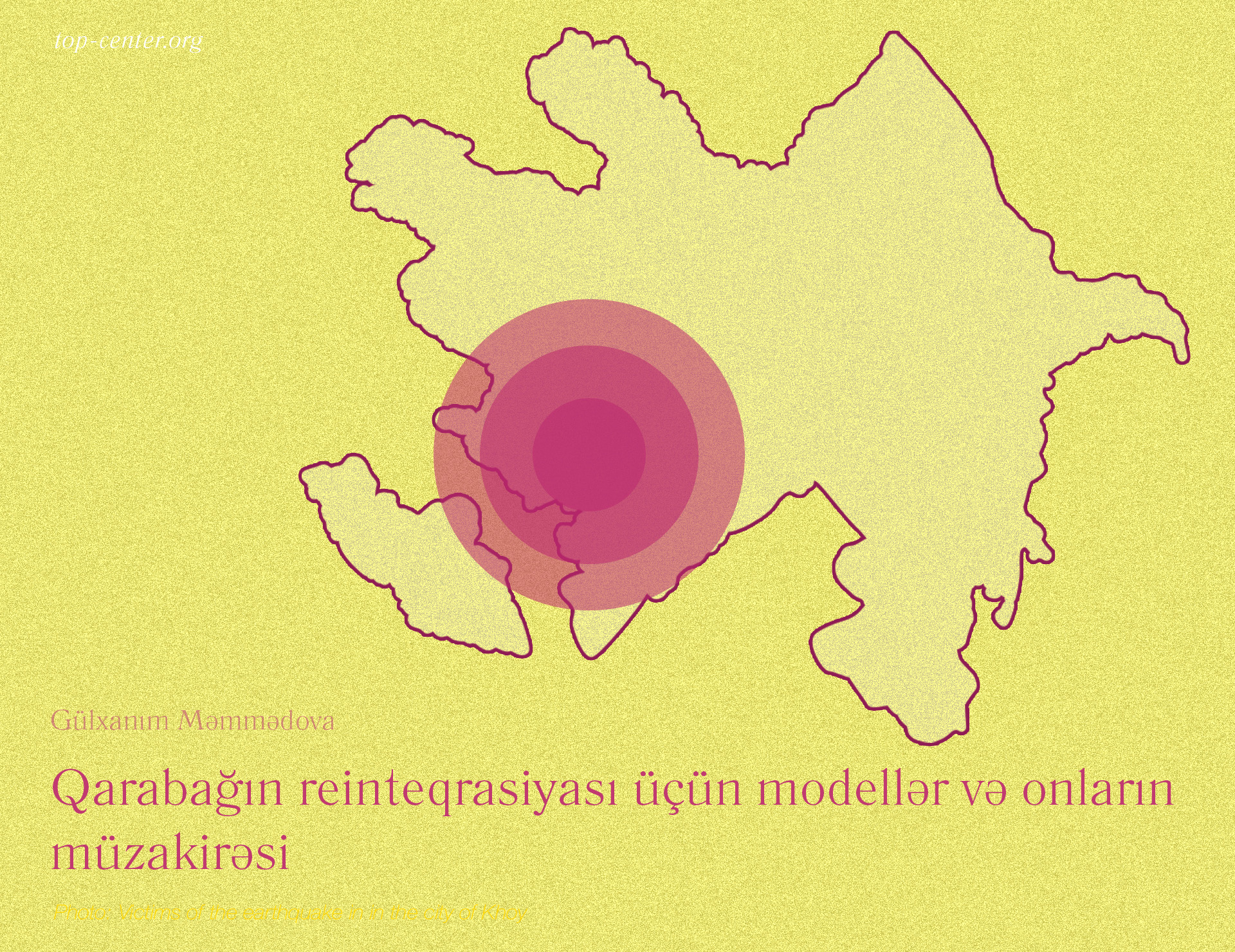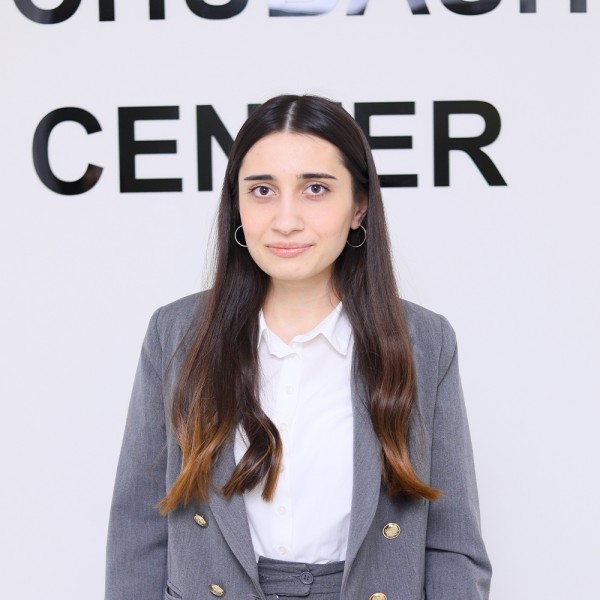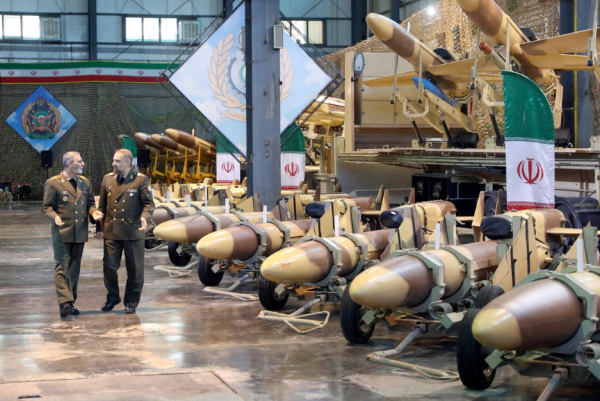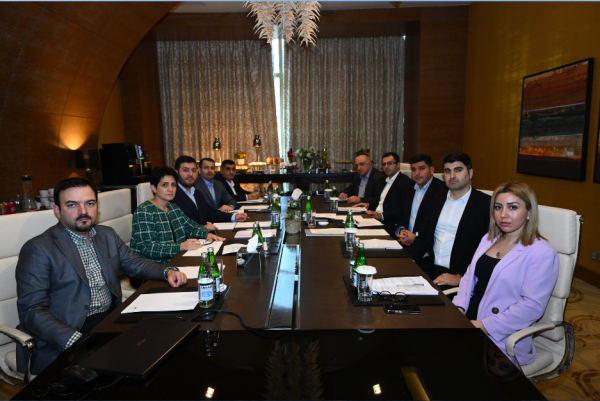Reintegration of Karabakh: what options are discussed?

The reintegration of Karabakh into Azerbaijan has been the central topic since the 2020 ceasefire agreement. Firmly asserting that the fate of this territory + the population falls within Azerbaijan's internal affairs, Baku has signaled the intention for the future reintegration process. Conversely, initially centered around the pursuit of self-determination of its compatriots, Armenia, as a kin state, recently shifted its focus towards seeking concrete international mechanisms and security guarantees for the ethnic Armenian population residing in Karabakh as geopolitical realities have changed and the situation on the ground evolved. In addition, as the completion of the Russian peacekeepers' mandate in 2025 approaches, the question of reintegration is becoming even more relevant and very urgent for the Azerbaijani side. The conclusion of the peacekeepers' mandate will require careful consideration and planning to ensure a smooth transition and to address the issue of reintegration. In the midst of this evolving dynamics, various reintegration models proposed by officials and expert community in Azerbaijan have emerged and been discussed. In light of these discussions, this article analyses the suggested models to better understand the potential paths toward reintegration.
In March 2023, a significant milestone was reached in Khojaly as the Azerbaijani authorities and representatives of the Armenians living in Karabakh engaged in historic talks. These discussions, also attended by the Russian peacekeepers, marked a pivotal moment. However, it is worth noting that, while Baku officially referred to these meetings as an essential step towards reintegration, the Armenian community of Karabakh characterised them as meetings to address critical technicalities pertaining to the daily issues faced by the community. Later in the same month, Azerbaijan's Presidential Administration invited to Baku the representatives of the Armenian community of Karabakh two times, seeking to ensure the collaborative process and facilitate discussions on reintegration and infrastructure projects. However, these invitations were met with rejection. Consequently, currently, the talks on reintegration predominantly remain at a unilateral level and do not include the ethnic Armenian population. It is also important to note that Azerbaijan has made it clear that it is not willing to internationalise this process by establishing a structure akin to the OSCE Minsk Group under any circumstances. Despite the fact that the Minsk Group had been instrumental in mediating the negotiations between the two sides during the Interwar period, Azerbaijan's stance suggests a preference for alternative mechanisms or approaches to address the matter of the Armenian community of Karabakh.
Baku`s reluctance is understandable: in 1998, the Co-chairs of the Minsk Group presented proposals based on the concept of a “common state” as a potential solution. This confederal proposal envisioned granting Nagorno-Karabakh the status of a state and a territorial unit in the form of a republic, which, together with Azerbaijan, would form a common state within the internationally recognized borders of Azerbaijan. However, Baku rejected this option, arguing that it infringed upon Azerbaijan`s sovereignty and contradicted the principles established during the OSCE Lisbon Summit in 1996, which emphasized the importance of respecting the territorial integrity of states and seeking peaceful resolutions based on internationally recognized borders.
Before the Second Karabakh War, Armenian and Azerbaijani experts were taken several times to the Åland Islands and South Tyrol, two well-known examples of successful autonomies in Europe, to study and learn from their experiences. The purpose of these visits would have been to examine the governance models and mechanisms in place in these regions and explore their potential applicability to the Nagorno-Karabakh conflict. The Åland Islands with a unique status within Finland enjoy a high degree of autonomy, including self-government and the right to maintain their own culture and language. The model is often cited as an example of a successful autonomous or semi-autonomous region that could potentially serve as a blueprint for resolving conflicts or managing disputes in different parts of the world. Currently, even after the war, some experts, including Kamal Makili-Aliyev, continue to promote the Åland Islands model potentially seeing it as a viable solution for addressing the issue of the reintegration of the Karabakh community. For instance, in his article for Common Space, Mr. Makili-Aliyev argues that carefully thought-out structures for power separation, respect for minority rights, and security guarantees can potentially foster a sense of unity between two ethnic groups. He also suggests the formation of a committee to address day-to-day issues, promote cooperation, and prevent minor disputes from escalating. According to him, language, cultural and property rights, as well as local control over tax revenues are crucial components of an autonomy agreement, accompanied by provisions for the complete demilitarization of the region.
In the post-war realities, Azerbaijani officials and experts study various reintegration cases as well. Recently, Assistant to the President of Azerbaijan - Head of the Foreign Policy Department of the Presidential Administration, Hikmet Hajiyev referred to Slovakia's experience with the Hungarian minority and highlighted the potential for international experts from countries with similar cases to contribute valuable insights and perspectives to the ongoing discussions regarding the reintegration. At its core, the model suggested by Mr. Hajiyev entails the recognition and preservation of the cultural, linguistic, and historical identity of the Armenian community in Karabakh, while simultaneously ensuring their meaningful participation in the political, economic, and social fabric of the region. In practice, the model envisions the establishment of inclusive governance mechanisms that would empower the Armenian community to actively contribute to decision-making processes. It also promotes the creation of platforms for open dialogue and constructive engagement, facilitating the expression of diverse perspectives and fostering a spirit of cooperation among both communities.
Another reintegration model, which has been suggested by Topchubashov Center`s director Rusif Huseynov is the Croatian case. According to him, the Center delved into this study immediately after the war and submitted the initial policy recommendations in July 2021. The Center has continued its work ever since, by constantly updating these recommendations. Recently, the head of the Center for Analysis of International Relations, Farid Shafiyev in one of his interviews also touched upon the case of the Serbian community residing in Croatia. It is considered that the Croatian reintegration model is regarded as a successful case in Europe. The Croatian reintegration model serves as an interesting case study for addressing the challenges of reintegrating breakaway regions back into a country following a conflict. In the context of the Croatian War of Independence in the 1990s, the Zagreb government sought to regain control over the Serbian-controlled areas of Croatia, the self-proclaimed Republic of Serbian Krajina, through a comprehensive approach. This model involved a combination of several key components, including political, legal, and security measures, as well as efforts to rebuild infrastructure and promote economic development in the affected areas. The Croatian government aimed to establish a system of governance in the affected areas that would be under the control of the central government. It aimed to foster reconciliation, ensure the return of displaced persons, and establish a functioning system of governance under the control of the central government. In this regard, the Croatian reintegration model emphasized the importance of rebuilding infrastructure, promoting economic development, and addressing socio-economic disparities in the affected areas. This included investments in transportation networks, utilities, healthcare, education, and job creation initiatives. The goal was to improve living conditions and provide opportunities for the returning population, as well as to encourage economic integration and cooperation between different communities. One of the important elements, which could suit Baku`s interests in this case is cultural autonomy, not political or territorial.
In his turn, expert Shujaat Ahmadzada in his recent article proposes a political model that will consider the needs and fears of both parties of the conflict. Instead of ethno-territorial autonomy, he suggests taking inspiration from the Israeli-Palestinian negotiations in Oslo. This involves promoting cooperation in areas of mutual interest, institutionalized contacts, economic exchanges, and a commitment to non-violence. Mr. Ahmadzada suggests dividing Karabakh into three zones based on the 1988 census: Zone A for Armenian-majority settlements, Zone B for Azerbaijani-majority settlements under Azerbaijan's governance, and Zone C for the Lachin corridor. He advocates for the abolition of the “Nagorno-Karabakh Defense Army” and the creation of new local police units, and proposes a moratorium on Azerbaijan's armed forces entering areas inhabited by the Karabakh Armenian community, and no legal consequences for ethnic Armenians who served in the military. Mr. Ahmadzada also addresses the issue of displaced Armenian populations and emphasizes the importance of preserving Karabakh's cultural heritage. He suggests allowing the Armenian Apostolic Church to establish a diocese in Azerbaijan and administer Armenian churches and cemeteries, while the Caucasian Muslims Office could oversee Muslim religious monuments and cemeteries in Armenia.
Although this issue is quite negatively perceived not only by the Armenian population of Karabakh but also in Armenia itself, some experts engage in various discussions surrounding this topic. One such discussion took place on the Dolce Vita channel, where Boris Navasardyan, president of the Yerevan Press Club, claimed that the Azerbaijani side also considers the situation in Karabakh could potentially resemble the example of Russians residing in Estonia and Latvia, known as “non-citizens”. The “non-citizens”, also known as “aliens”, is applied to a portion of the Russian-speaking population who did not meet the criteria for automatic citizenship after the independence. This status limited their political rights, including the right to vote in national elections and hold certain government positions. It should be noted that these policies were mainly aimed at addressing the legacy of Soviet rule and ensuring the rights of ethnic Latvians and Estonians in their newly independent countries. However, the context here is different and this was applied to the post-1945 population, while in Karabakh there is not much parallel. In addition, Baku has consistently committed to upholding equal rights for all ethnic minorities in the country, including the Armenian population. This demonstrates Azerbaijan's dedication to avoiding policies that marginalize or restrict the rights of Armenians, unlike the limitations on political participation faced by Russian-speaking residents in Latvia and Estonia.
The shifting discourse and the exploration of reintegration models signify a profound step toward finding common ground. However, it is important to understand that while leveraging the experiences of other countries is valuable and the international reintegration models could potentially provide insights or lessons for addressing the current post-conflict situation, it is important to consider the specific dynamics and circumstances of the Armenian population in Karabakh and incorporate the local peculiarities to any roadmap applied. Although the road ahead may present complexities, only by developing comprehensive and sustainable solutions, it will be possible to lay the foundation for sustainable peace in Karabakh.
The original in Russian was published here.







